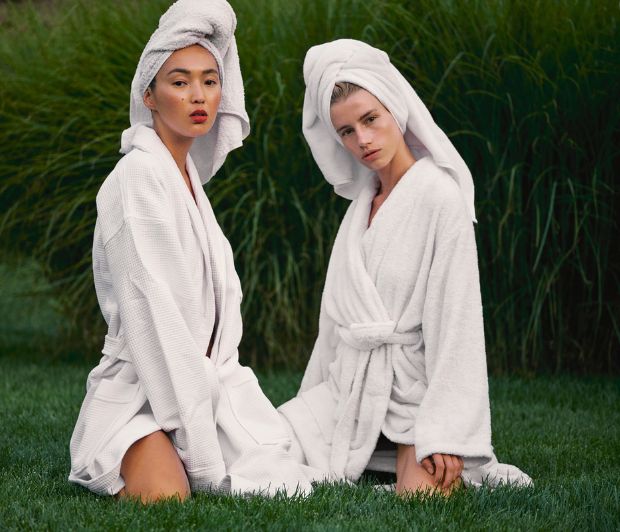Closing the Orgasm Gap: Do Women Enjoy Sex as Much as Men?

Read on and learn how to come together as a couple...
In celebration of International Women’s Day, we’re delving into the truth about women’s sex lives and pleasure!
Now, we know it’s not a competition but for a while, it’s been a socially accepted norm that men seem to ‘enjoy’ sex more than women. Typically, this idea focuses on desire and sexual satisfaction rather than actual pleasure or enjoyment (which would be far harder to measure).
Many factors come into play when examining our enjoyment of sex (biological, psychological and social) so it's certainly a sweeping generalisation to say that men simply enjoy sex more than women. That said, societal views and sexual attitudes towards women’s desire have undoubtedly impacted our understanding of women’s sexual arousal and how women’s orgasms work.
So, are societal norms entirely to blame for the gender difference in sexuality or do innate differences between the sexes like libidos and hormones also play a part in how much we enjoy sex?
Read on and mind the orgasm gap!
What is the Orgasm Gap?
According to a YouGov survey, only 30% of straight women orgasm every time they have sex compared to a whopping 63% of straight men. This, friends, is the orgasm gap we’re referring to.
Many women are all too familiar with a sexual partner racing to the finish line when for them the end is nowhere in sight, in fact, they haven’t even got their trainers on yet.
The survey also highlights that the orgasm gap disproportionately impacts heterosexual women with lesbian women more likely to always orgasm during sex (40%). So what’s behind this modern-day tragedy?


Do Women Have Lower Sex Drives?
It would be remiss of us to not mention innate gender differences and sex differences when discussing sexual enjoyment and satisfaction.
Findings from intimacy and sex researcher Sari van Anders suggest that typically, sexual desire or ‘sex drive’ is higher in men than women. The hormone testosterone is thought to account for this difference as well as within-sex variation in desire in both women and men.
Looking at the evolutionary theory, men could optimise their reproduction by mating with lots of women and fathering lots of children suggesting they might be more inclined to have casual sex. Women, in contrast, are limited in the number of children they can bear and due to the cost of pregnancy falling upon them, they might traditionally have been more selective about who they have sex with.
Of course, nowadays we have contraception. We f*ck for fun not just to make babies and it’s a great time to be alive!
Although we’re focusing on sexual enjoyment rather than desire, the aforementioned evolutionary approach might have set us off on a path to believing that men somewhat ‘enjoy’ sex more than women, which is not necessarily the whole story.
Yes, hormone differences like variations in estrogen and testosterone levels are noteworthy considerations in the debate and do impact sexual desire. Not to mention the impact of menopause which can often cause low libido.
Delving a little further, men are taught at a young age to hold their penis to urinate so typically learn faster about the pleasure of self-touch. On the other hand, young women do not need to touch their clitoris in daily life. This in combination with a lack of encouragement for self-exploration and the devastating impact of “slut shaming” also nods to the discrepancy in sexual desire between men and women.


Good Girl Conditioning
Although indeed, women are largely considered more sexually liberated today than they previously have been, the truth is we’re still subjected to something rather sinister called ‘good girl conditioning’.
Unfortunately, subtle messaging still permeates conversations with women and girls from a very young age. Women are often encouraged to hide their sexual interests and are shamed for their desires whilst the same desires are celebrated in men and boys.
Psychologists suggest that as a result, the importance of women’s pleasure, sensuality and sexual desire has been minimised and wrapped up in shame.
Women Get Worse Sex
Moreover, psychologists Terri D Conley and Verena Klein point to the fact that women having penis-vagina penetrative sex are having worse sex than men, so it’s no wonder they don’t enjoy it as much. And it seems a lack of understanding of cis female genitalia and the mechanics of the female orgasm is the cause.
Sadly, we know far less about the female orgasm than we do the male orgasm, primarily as a result of lacking research in the area and a failure to deliver robust and comprehensive sex education.
Most interestingly, YouGov’s research does shed some light on the potential reason behind the gap and it’s very interesting...
Clear differences emerge between the sex lives of women who orgasm every time they have sex and those who don’t. Women who orgasm every time during sex are far more likely to say they always receive clitoral stimulation. For example, in the case of straight women, 38% of those who come every time they have sex say it incorporates clitoral stimulation, whereas for those who don’t always orgasm only 18% always include clitoral stimulation.
Put simply, don’t neglect the clit.
Do Women Actually Enjoy Sex Less Than Men?
If you're a woman who thinks you're just not that into sex, that may be the case — but we also think some circumstances make it harder for women to access sexual desire consistently.
Whilst sex and gender differences might impact our innate desire and the speed at which we reach climax, that’s not to say all women enjoy sex less than men.
It’s important to note there’s a difference between orgasming and enjoying sex.
Ultimately the orgasm gap – although criminal in our books – is not truly a reflection of women's enjoyment of sex per se.
We should bear in mind that the big O isn’t necessarily what it’s all about. We all indulge in pleasure in different ways and for many, the journey to climax is the most enjoyable part. Put simply, women can still enjoy sex even without achieving orgasm. This highlights the need to prioritise communication, exploration, and experimentation during sexual activity, rather than just focusing on the end goal.
How to Bridge the Orgasm Gap in your Relationship?
To address the orgasm gap and promote women's pleasure, there are several things that you can do. These include learning about female anatomy and pleasure, practising open communication with sexual partners, exploring different positions, using sex toys and lubricants, and of course, giving that sweet spot – the clitoris – some TLC.
Ultimately, the goal should be to create a more enjoyable and satisfying sexual experience for Every Body regardless of their gender or sexual orientation although, by the sounds of it, straight women have drawn the short straw here. By acknowledging and addressing the orgasm gap, we can empower women to embrace their sexuality and enjoy sex on their own terms.




